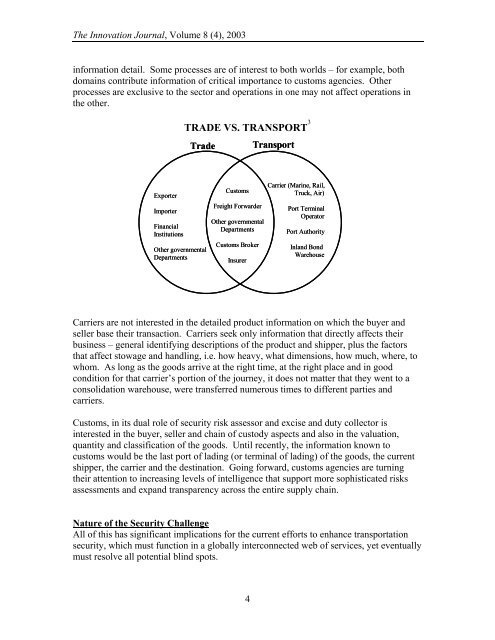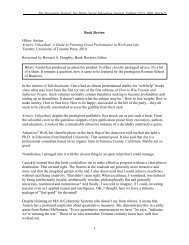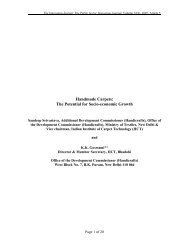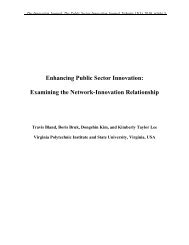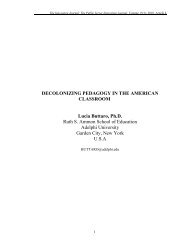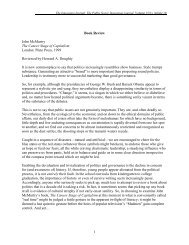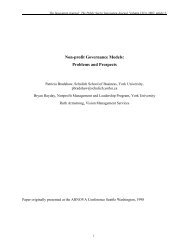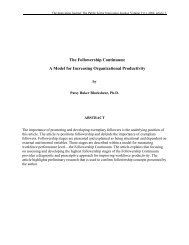Trade Corridor Transparency and Security - The Innovation Journal
Trade Corridor Transparency and Security - The Innovation Journal
Trade Corridor Transparency and Security - The Innovation Journal
You also want an ePaper? Increase the reach of your titles
YUMPU automatically turns print PDFs into web optimized ePapers that Google loves.
<strong>The</strong> <strong>Innovation</strong> <strong>Journal</strong>, Volume 8 (4), 2003<br />
information detail. Some processes are of interest to both worlds – for example, both<br />
domains contribute information of critical importance to customs agencies. Other<br />
processes are exclusive to the sector <strong>and</strong> operations in one may not affect operations in<br />
the other.<br />
TRADE VS. TRANSPORT 3<br />
<strong>Trade</strong><br />
Transport<br />
Exporter<br />
Importer<br />
Financial<br />
Institutions<br />
Other governmental<br />
Departments<br />
Customs<br />
Freight Forwarder<br />
Other governmental<br />
Departments<br />
Customs Broker<br />
Insurer<br />
Carrier (Marine, Rail,<br />
Truck, Air)<br />
Port Terminal<br />
Operator<br />
Port Authority<br />
Inl<strong>and</strong> Bond<br />
Warehouse<br />
Carriers are not interested in the detailed product information on which the buyer <strong>and</strong><br />
seller base their transaction. Carriers seek only information that directly affects their<br />
business – general identifying descriptions of the product <strong>and</strong> shipper, plus the factors<br />
that affect stowage <strong>and</strong> h<strong>and</strong>ling, i.e. how heavy, what dimensions, how much, where, to<br />
whom. As long as the goods arrive at the right time, at the right place <strong>and</strong> in good<br />
condition for that carrier’s portion of the journey, it does not matter that they went to a<br />
consolidation warehouse, were transferred numerous times to different parties <strong>and</strong><br />
carriers.<br />
Customs, in its dual role of security risk assessor <strong>and</strong> excise <strong>and</strong> duty collector is<br />
interested in the buyer, seller <strong>and</strong> chain of custody aspects <strong>and</strong> also in the valuation,<br />
quantity <strong>and</strong> classification of the goods. Until recently, the information known to<br />
customs would be the last port of lading (or terminal of lading) of the goods, the current<br />
shipper, the carrier <strong>and</strong> the destination. Going forward, customs agencies are turning<br />
their attention to increasing levels of intelligence that support more sophisticated risks<br />
assessments <strong>and</strong> exp<strong>and</strong> transparency across the entire supply chain.<br />
Nature of the <strong>Security</strong> Challenge<br />
All of this has significant implications for the current efforts to enhance transportation<br />
security, which must function in a globally interconnected web of services, yet eventually<br />
must resolve all potential blind spots.<br />
4


